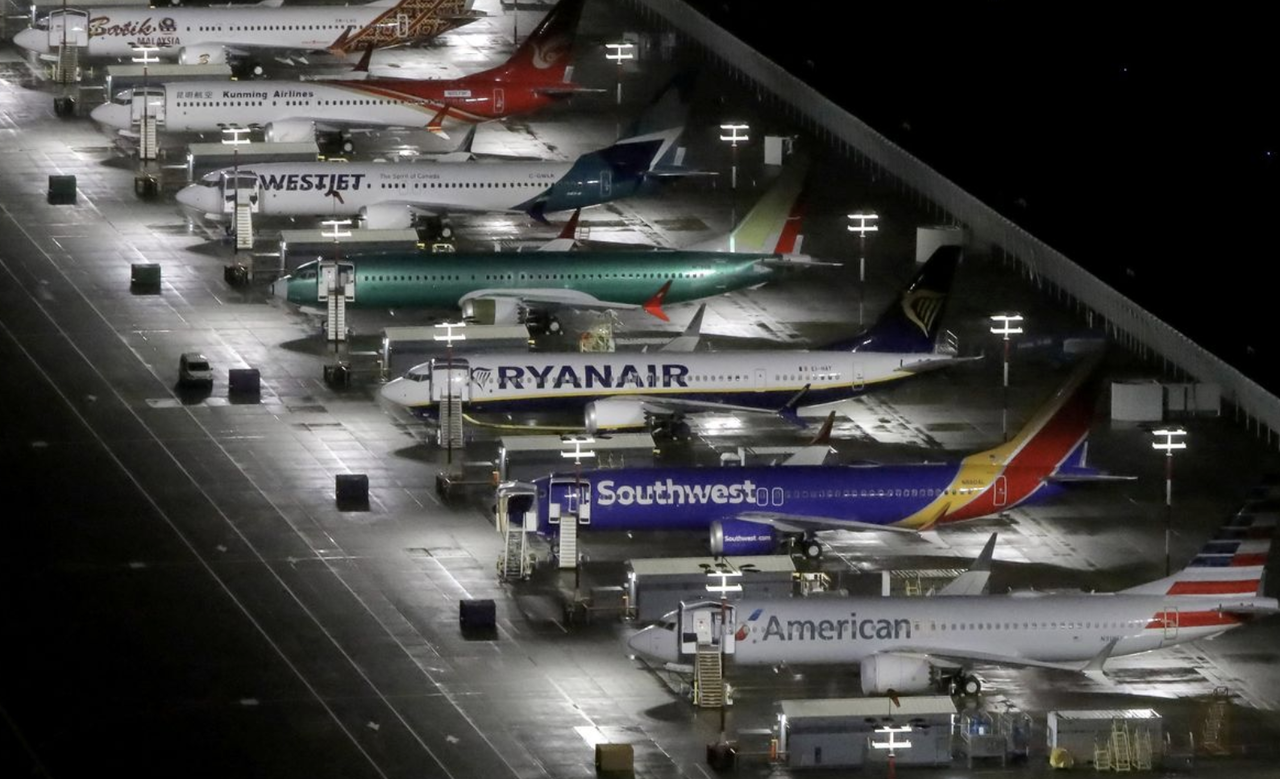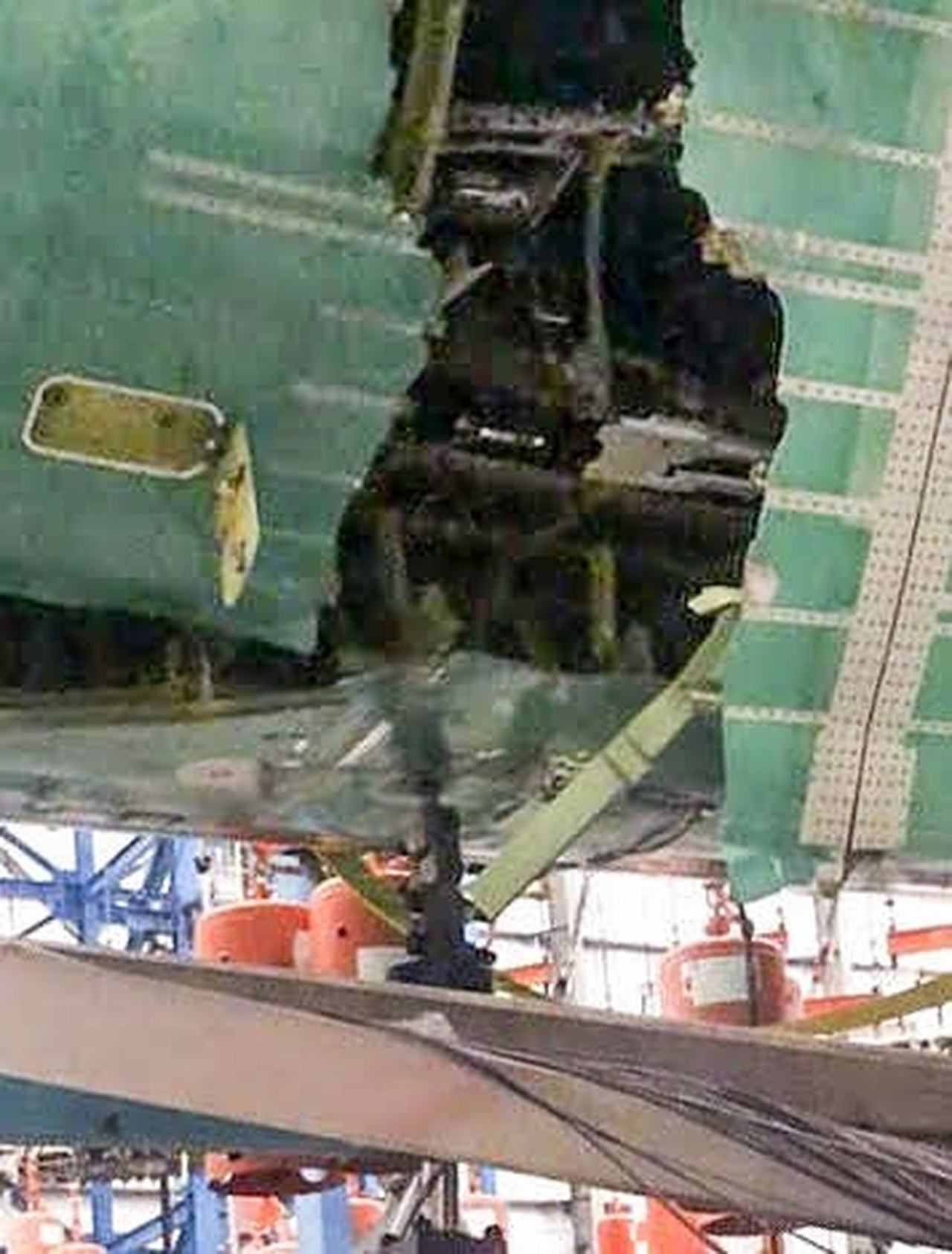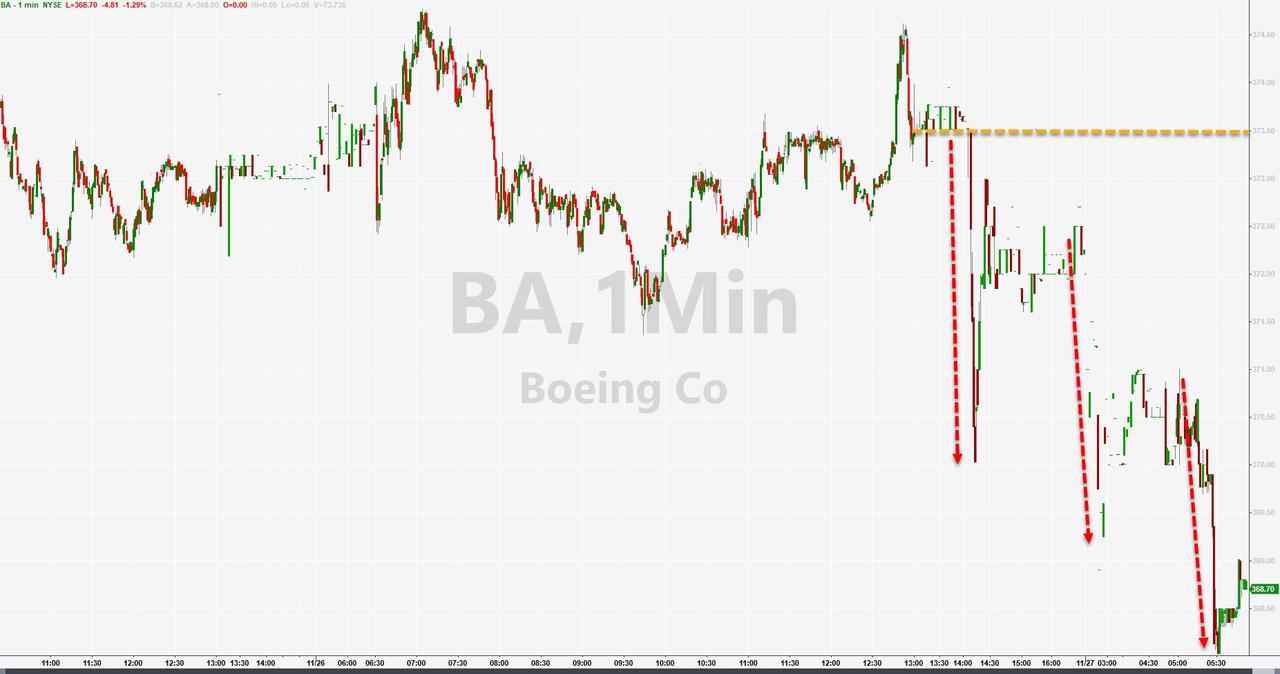Boeing Shares Slide On Reports 777 Fuselage “Split Dramatically” During Stress Test
In a blockbuster report that has hammered Boeing’s shares just before the long holiday weekend, the Seattle Times reported that a failure of a Boeing 777 stress test that had been initially reported on in September was actually worse than those reports suggested.
The ST also published what appears to be a grainy cellphone photo of the damage:
The test plane’s fusilege “split dramatically” along the underside of the plane near where the landing wheels are stowed. The body of the plane was rent open with the force of a bomb. Workers in another hanger nearby said the ground the shook and they heard a load explosion. The Seattle Times clarified that their earlier reporting about a door flying off its hinges was mistaken: the 777’s doors close from the inside and are larger than the holes they cover, but one door was seriously damaged.
When Boeing tested the original 777 model in 1995, it kept going until the aluminum wings snapped at 1.54 times limit load. On the 787, it chose to stop at 1.5 and then ease the composite wings back down again. Breaking a pair of composite wings could result in release of unhealthy fibers in the air, so it’s likely that with the 777X also having composite wings, that was the plan again this time.
But as Boeing personnel along with six FAA observers watched from the windows of a control room, at 1.48 times limit load – 99% of ultimate load – the structure gave way. Under the center fuselage, just aft of the wing and the well where the landing gear wheels are stowed, the extreme compression load caused the plane’s aluminum skin to buckle and rupture, according to the person familiar with the details.
The resulting depressurization was explosive enough that workers in the next bay heard it clearly. One worker said he heard “a loud boom, and the ground shook.”
Then there was the secondary damage…
That then caused secondary damage: The photos show that the fuselage skin split part of the way up the side of the airplane, along with areas of bent and twisted structure that extended through the area around a passenger door.
A day after the incident, based on incomplete information, The Seattle Times and other media outlets incorrectly reported that a cargo door had blown out.
Unlike the plane’s cargo doors, which hinge outward, the passenger doors on airliners are plug-type doors that only open inward and are larger than the hole they close. But the structure around that passenger door just aft of the 777X wing was so damaged that the pressure blew the door out and it fell to the floor.
These secondary damage sites — the rip up the side of the fuselage, the door blown out — alarming as they might seem, are not a concern to air safety engineers. “The doors were not a precipitating factor,” said the person familiar with the details.
It’s the initiating failure, the weakness in that localized area of the keel, that Boeing must now fix.
As uncomfortable as it sounds, Boeing probably won’t need to do a retest: Since the rupture occurred so close to the threshold level, the FAA will likely allow Boeing to make the necessary changes independently and then show its work via analysis.
A safety engineer at the Federal Aviation Administration (FAA), speaking anonymously without permission from the agency, said that because the blowout happened so close to the target load, it barely counts as a failure.
Boeing will have so much data gathered on the way to the 99% stage that it can now compare with its computer models to analyze the failure precisely, the FAA engineer said. It can then reinforce the weak area, and prove by analysis that that’s sufficient to cover the extra 1%.
One engineer said the rip actually isn’t anything to worry about.
The engineer said it’s not that unusual to find a vulnerability when taking an airplane structure to the edge of destruction.
“The good news is they found it and can address it,” the FAA engineer said. “They found a problem they can fix. They can beef up the structure based on analysis.”
Unfortunately for Boeing, traders weren’t in the mood for excuses, and sent the company’s shares lower in premarket trade…even as the broader market was set to open at record highs.
Tyler Durden
Wed, 11/27/2019 – 08:56
via ZeroHedge News https://ift.tt/34uD8ic Tyler Durden


